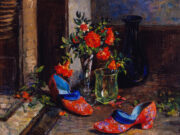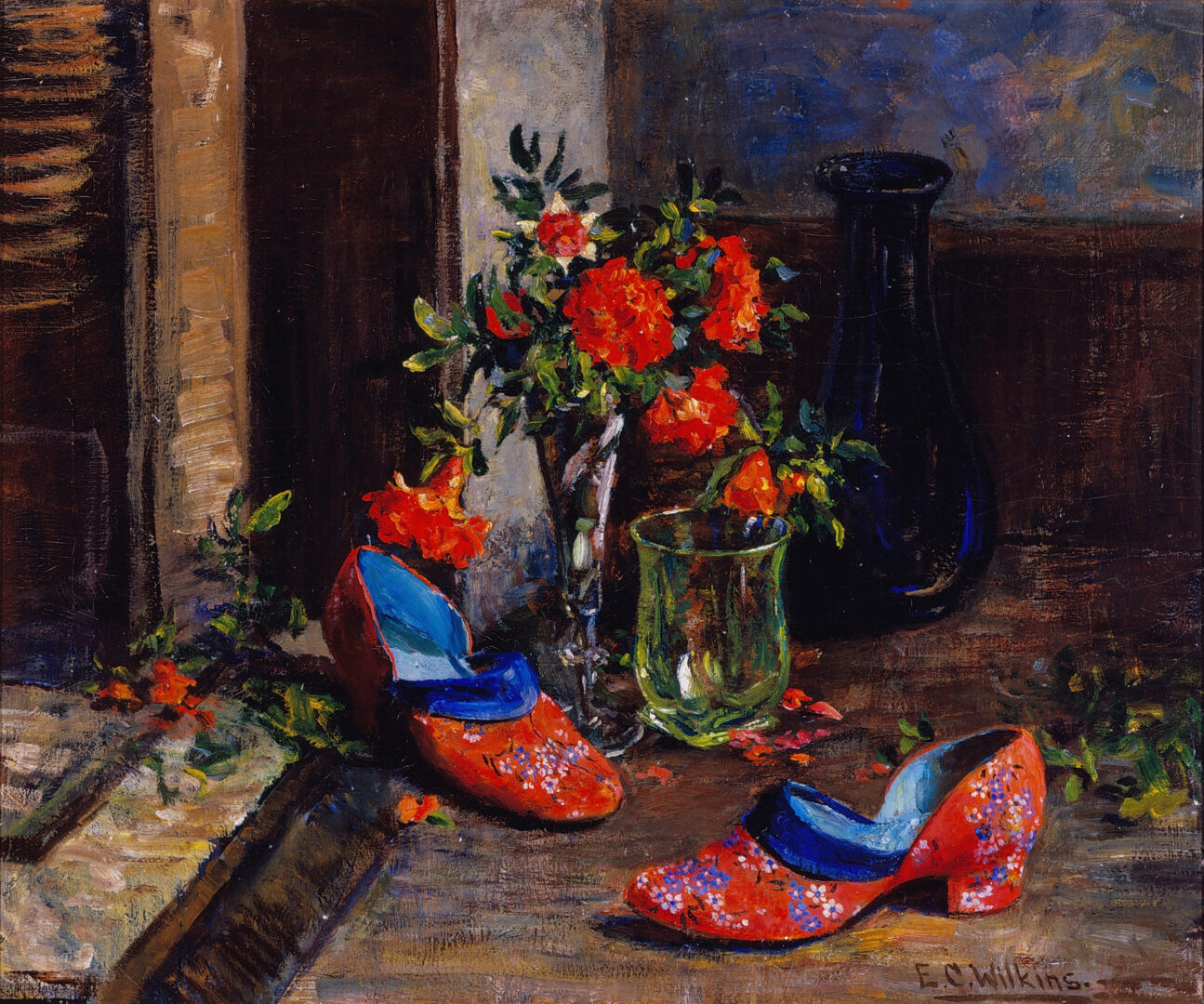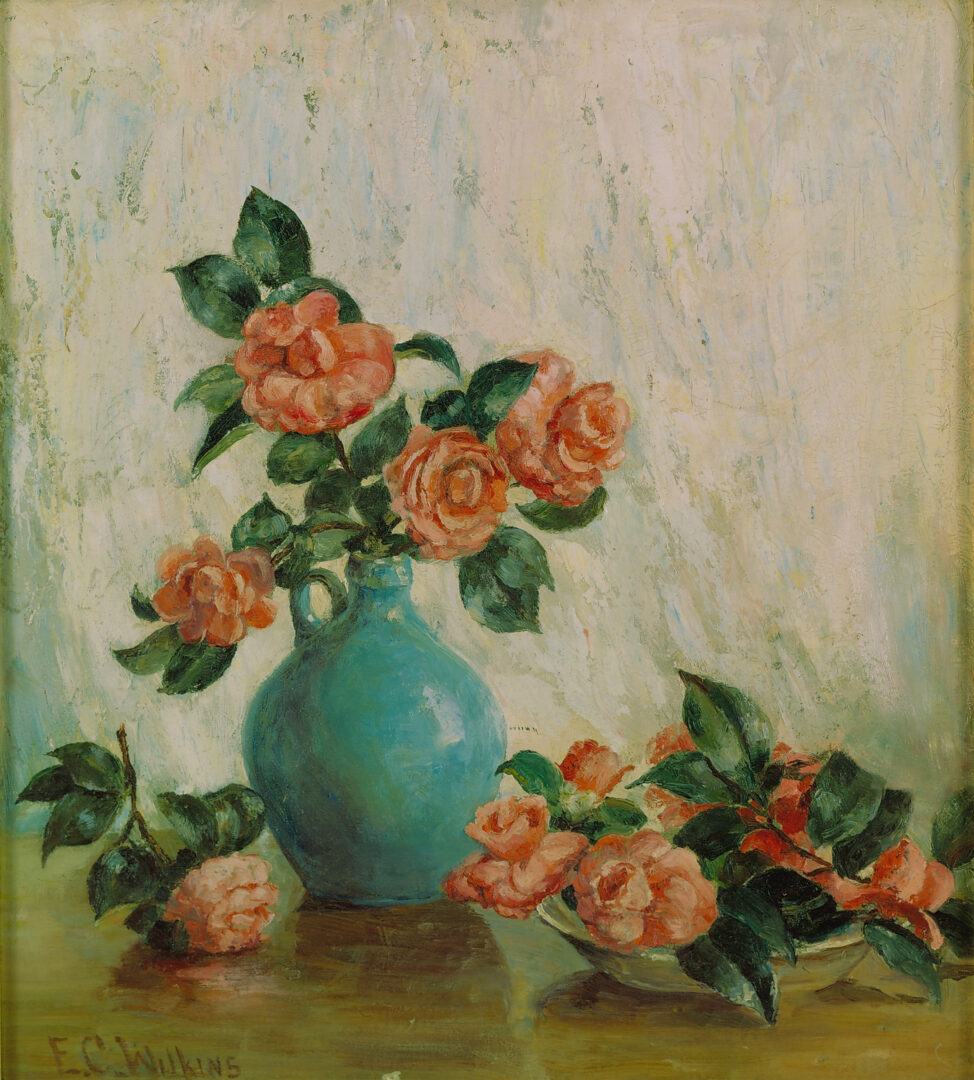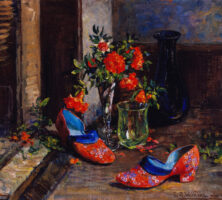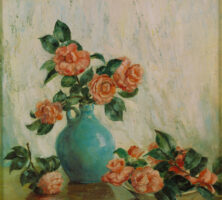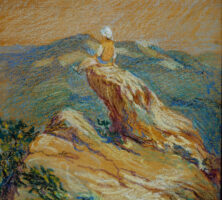A lifelong resident of Savannah, Emma Cheves Wilkins continued the artistic legacy established by her mother and grandmother, and honored the efforts of earlier generations. She developed a census of paintings that is now part of the Frick Art Reference Library in New York City and supported herself by painting portraits of prominent citizens, while simultaneously gaining a reputation for painting lush, impressionistic landscapes and still lifes.
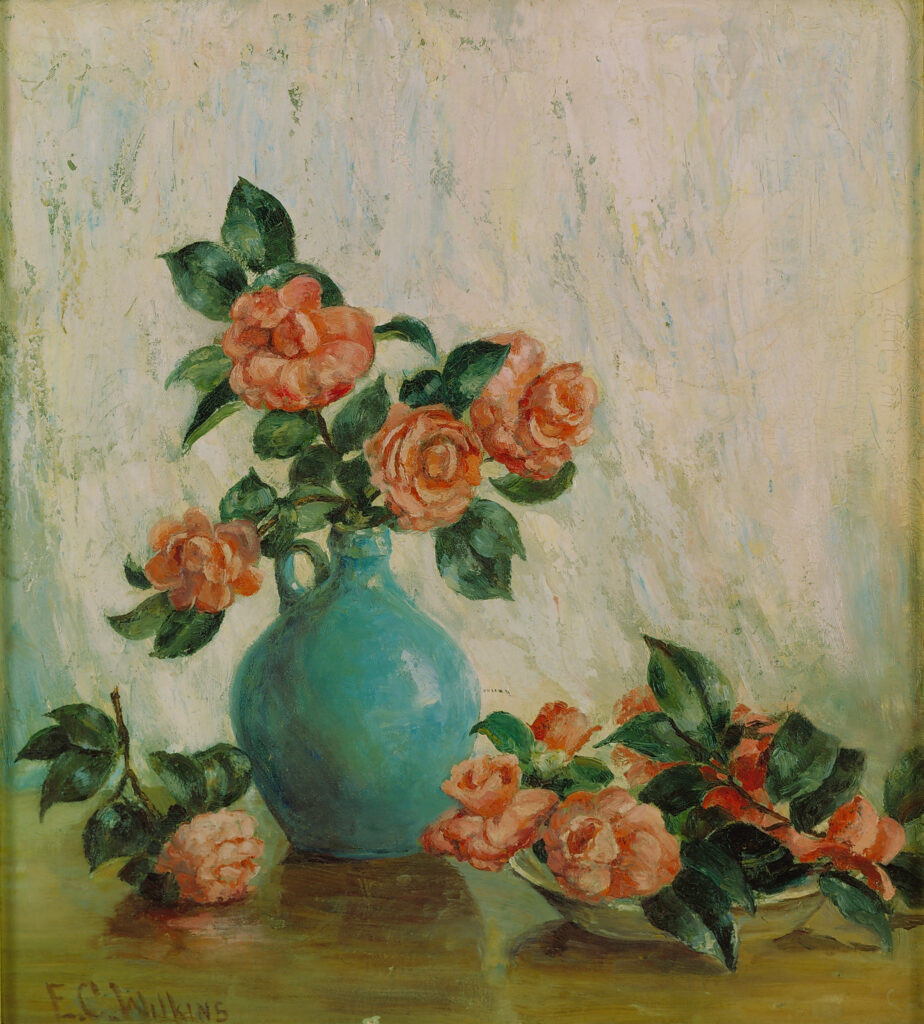
Courtesy of Morris Museum of Art
Born on December 10, 1870, Wilkins was the oldest of eight children born to Emma Cheves and Gilbert A. Wilkins. Though the family was not wealthy, generations of prominent southerners on the maternal side of the family led to a wide range of useful connections. Both Emma’s mother, who gave private art lessons, and her grandmother, Charlotte McCord Cheves, were academically trained artists who specialized in painted miniatures. Wilkins was instructed at home and received additional training from Carl Brandt, the first director of the Telfair Academy of Arts and Sciences (later Telfair Museums).
An astute and socially prominent businesswoman, Wilkins was also a self-supporting artist. From her private art school, she taught members of the next generation of Savannah artists, including Myrtle Jones, Augusta Oelschig, and Hattie Saussy. Her family’s social network provided access to prominent citizens of the region and nation, who commissioned portraits that she painted during the academic year in order to keep her summers free for other activities. During several summers, she traveled to Europe seeking instruction, especially in life drawing. In 1895 she and Lucile Desbouillons, who later became the matriarch of the Murphy family of Savannah artists, studied at the Colarossi Academy in Paris, France. She studied in France with Henry Caro-Delvaille, Gustave Courtois, Louis-Auguste Girardot, and Louis-Maurice Boutet de Monvel. She spent one month in Munich, Germany, an experience that influenced her color palette and use of both heavy brushwork and impasto.
Portraits of judges, politicians, doctors, bankers, military figures, and, to a lesser extent, women and children, provided a livelihood for Wilkins. She was also well known for loosely painted landscapes and still lifes, which were often exhibited and won prizes in juried shows. Wilkins noted that she had never studied landscape painting but created them purely for pleasure. She exhibited her work in New York City and in Georgia, with the Association of Georgia Artists, the Savannah Art Club, the Southern States Art League, the Society of Washington (D.C.) Artists, and the Dogwood Festival of 1936, which was held at the High Museum of Art in Atlanta. In 1901 she showed her work at the South Carolina Inter-State and West Indian Exposition in Charleston.
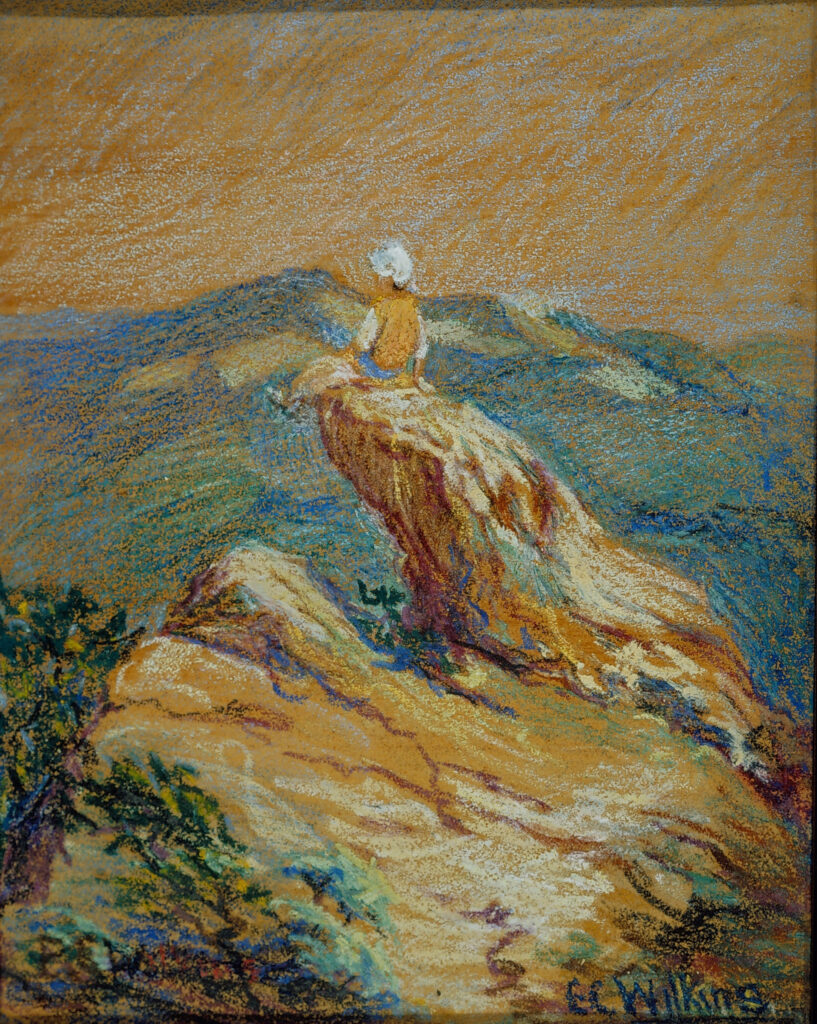
Courtesy of Morris Museum of Art
Wilkins was an active member of the Savannah Art Club and served the Telfair Academy in several different capacities. She donated her personal collection of antique fashion plates, a painting by colonial artist Jeremiah Theus, and decorative art objects to the museum.
Wilkins compiled a list of pre-1880 portraits held in private collections in the region, which is now included in the Frick Art Reference Library. This institution, founded in 1920 by Helen Clay Frick as a memorial to her father, provides a comprehensive research library of text and image collections for the study of Western art.

Courtesy of Morris Museum of Art
Wilkins’s personal papers are in the collection of the Georgia Historical Society in Savannah. She donated the Cheves and Wagner Family Papers, the legacy of generations from the maternal side of her family, to the Southern Historical Collection at the Wilson Library of the University of North Carolina at Chapel Hill. She also donated a miniature painting created by her grandmother of a family member to the Gibbes Museum of Art in Charleston, South Carolina.
Wilkins died on December 18, 1956, and is buried in Bonaventure Cemetery in Savannah.
Her work is found in the permanent collections of the Armstrong State University in Savannah, the Morris Museum of Art in Augusta, the Telfair Museum of Art, and in numerous private collections.


